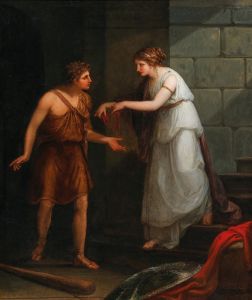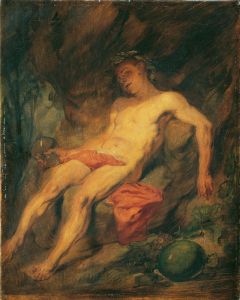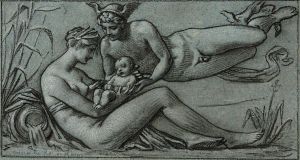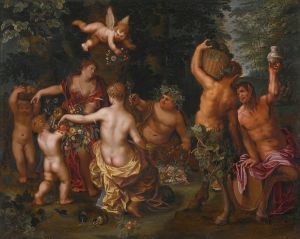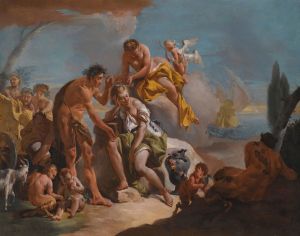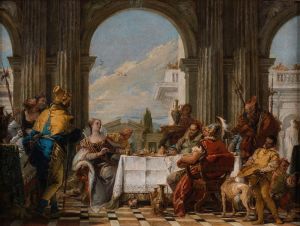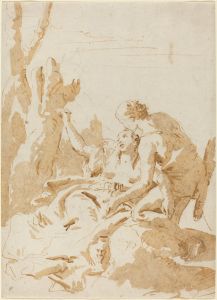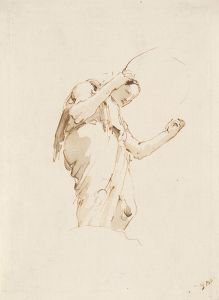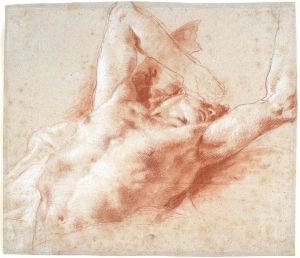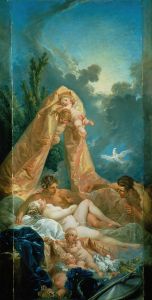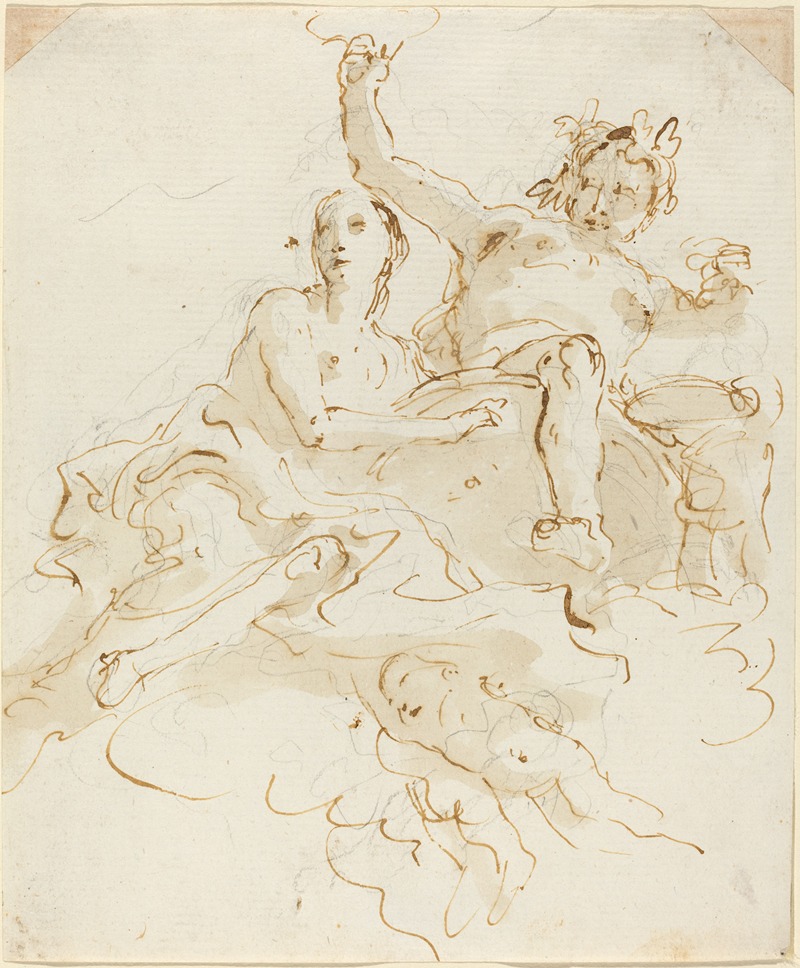
Bacchus and Ariadne
A hand-painted replica of Giovanni Battista Tiepolo’s masterpiece Bacchus and Ariadne, meticulously crafted by professional artists to capture the true essence of the original. Each piece is created with museum-quality canvas and rare mineral pigments, carefully painted by experienced artists with delicate brushstrokes and rich, layered colors to perfectly recreate the texture of the original artwork. Unlike machine-printed reproductions, this hand-painted version brings the painting to life, infused with the artist’s emotions and skill in every stroke. Whether for personal collection or home decoration, it instantly elevates the artistic atmosphere of any space.
Giovanni Battista Tiepolo's Bacchus and Ariadne is a painting by the renowned Venetian artist, who is celebrated for his mastery of the Rococo style and his ability to depict grand, dynamic compositions. The artwork portrays the mythological story of Bacchus, the Roman god of wine, and Ariadne, the Cretan princess who was abandoned by Theseus on the island of Naxos. This subject was a popular theme in European art, as it allowed artists to explore themes of love, transformation, and divine intervention, often accompanied by dramatic and visually rich settings.
The painting captures the moment when Bacchus discovers Ariadne and falls in love with her. According to classical mythology, Bacchus, moved by her beauty and sorrow, promises to make her immortal and places a crown of stars in the sky to honor her. Tiepolo's depiction of this scene is characterized by his use of vibrant colors, fluid brushwork, and a sense of movement that brings the mythological narrative to life. The figures are rendered with elegance and dynamism, typical of Tiepolo's style, and the composition is imbued with a sense of theatricality.
Tiepolo was known for his ability to integrate classical themes with the lightness and decorative qualities of the Rococo period. In Bacchus and Ariadne, he employs a luminous palette and dramatic contrasts of light and shadow to enhance the emotional intensity of the scene. The figures are often set against a backdrop of expansive skies, a hallmark of Tiepolo's work, which adds a sense of grandeur and openness to the composition.
The exact date of the painting is not definitively known, but it is believed to have been created during Tiepolo's mature period, when he was at the height of his artistic powers. During this time, Tiepolo was highly sought after by patrons across Europe, and his works often adorned the ceilings and walls of palaces, churches, and villas. While the specific commission or patron for Bacchus and Ariadne is not documented, the painting reflects the artist's deep engagement with classical mythology and his ability to adapt these stories to the tastes and expectations of his patrons.
Today, Bacchus and Ariadne is recognized as an example of Tiepolo's skill in combining mythological storytelling with the decorative elegance of the Rococo style. The painting is housed in a public or private collection, though its current location is not specified in available records. Tiepolo's work continues to be celebrated for its technical brilliance, imaginative compositions, and ability to convey both drama and beauty.





